Risiera Di San Sabba, Stalag 339 in Trieste, Italy
Thunder’s breaking above as I write this, intermittent floods of rain hammering on the roof force us to shout out load to each other, although we’re only a couple of meters apart (N45.621031, E13.789258). To my left, through our plastic motorhome window, I can almost touch the outline of a tall window in a stone wall. It’s been filled, leaving a small metal-barred gap, by roughly-laid concrete. It’s the window into a death camp.
I’m writing this piece separate to our usual blog posts. Mixing what we’ve just experienced with news about food we’ve tried, buildings we’ve seen and living people we’ve spoken with doesn’t seem right.
As usual, we knew nothing of Trieste before we came here. Our education, in the form of Rough Guide, Lonely Planet and Wikipedia, takes up a fitting amount of our time as we journey from place to place. One of these sources told us of an ex-rice husking factory which had been converted in 1943 into Stalag 339 by the Nazis – Risiera Di San Sabba. Despite being easily within the city limits, it had been used to detain political prisoners and Jews, and commit acts of inhumanity. To people who had done no wrong. The place, which was much larger than its present day incarnation, served as a work camp, prison, transit camp for those being moved to Dachau, Auschwitz and other camps, and for the torture, murder and burning of innocents.
We’d struggled to find the place, an encounter with a narrow and steep, wet cobbled street had our nerves on end, so we sought out refuge in Lidl car park. It transpired we’d found it; Lidl is built on it, and the remaining buildings next to our van were the museum. The fleeing Nazis had done the filthy, cowardly thing of blowing apart the apparatus of death; the chimney and oven are gone, replaced with stone and metal reminders. They’d later claim to know nothing of the place, or pretend, perhaps even to themselves, it was just used as a prison. I write on the verge of tears; the same emotion I felt when we walked into the first room as we entered, the room where those unfortunate enough to be chosen to die quickly were held, labelled the ‘death cell’. We’re told sometimes these new entrants would find themselves interned with dead bodies, awaiting burning. We can’t imagine the dread.
Ju wasn’t keen on coming here, which I can easily understand. I felt a powerful draw. I felt it was our duty to expose ourselves to this thing, this evil which persists to this day, this burning hatred, this greed, this dark side of human nature which we’re only too happy to ignore. Only yesterday we saw news of a Syrian massacre; it’s a never ending struggle. I felt we had to come, wandering in leisure, safety and comfort that we are, free from fear that our beliefs alone will cast us into a situation where we find ourselves writing letters to our loved ones telling them we’re scheduled to die today.
As the rain beat down on us, we were much of the time alone in the rooms. The scrawls the prisoners had made on the walls were gone, deliberate or accidental neglect erasing them. Just a few ‘tally’ marks remain on some of the windows. There were no signposts to the place on the roads outside. It would certainly be easier for Trieste to demolish this place and extend Lidl’s car park over the lot of it; Trieste we learn is where the commander of the camp was born. It is to their credit it remains.
I won’t write about the details of the place, the people who passed through here or didn’t make it, the Nazi beliefs, the strategic location of Trieste, the design of the camp, the way in which engines and music were used to mask noises of pain and desperation, the complicity of some Italians. I’d encourage you to come if you’re nearby, buy the €1 booklet from the information office, wander the small rooms, breath the air, and think.
We’re driving south now, through the rain to the Slovenian coast. One aim of our travels was to educate ourselves; today has built upon our education. It has certainly hardened my resolve to fight against ignorance, my own above all.
- The “Death Cell”. 3000 to 5000 people were killed here, an exhibit shows a crude club. Gas and bullets were also thought to be used..
- Window from the death cell. If you feel an ounce of racism in you, come here.
- I thought these cells were tiny, then learned they housed up to six people. The two on the left were used for torture.
- Few marks remain on the walls; I can only speculate what these might mean, or who made them.
- A few drying, dead flowers are dotted around, this one hung from outside a cell.
- A harrowing drawing; the Nazi death machine had a huge logistical problem dealing with those they deemed inferior to themselves.
- Alongside the killing, prisoners were used to make shoes, paying for their own incarceration.
- The chimney was blown up, by those claiming to have nothing to hide. A few metal girders protrude upwards marking its location.
- The walls in one area are dotted with plaques, many from just a few years ago. Why did it take so long?
- Holding in emotion is a difficult job in this place, reading messages like this.
- Entrance to Risiera Di San Sabba
- Risiera Di San Sabba – the cells are against the back wall, with no windows
Jay

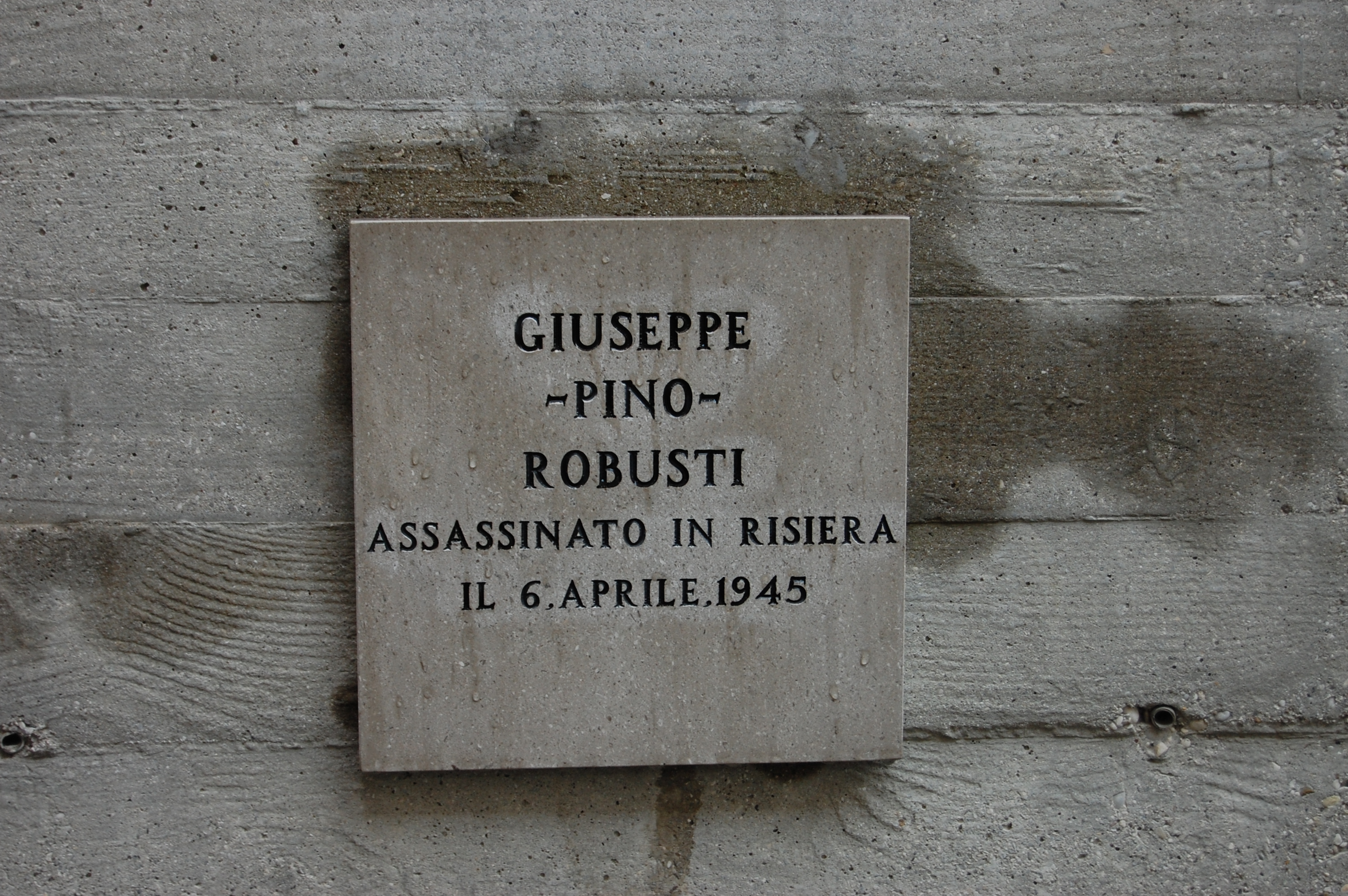
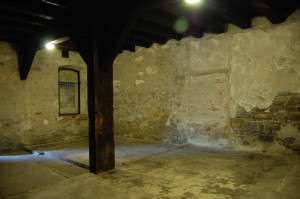
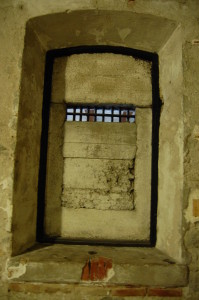
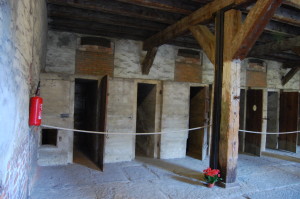
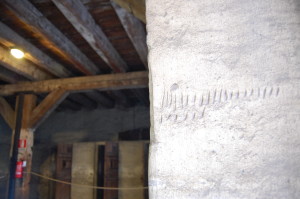
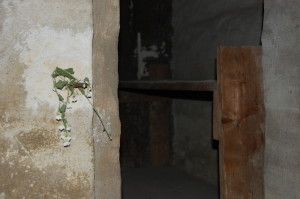
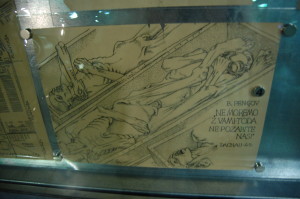
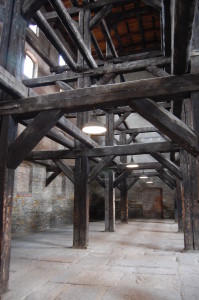

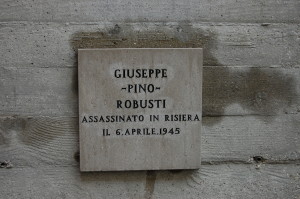
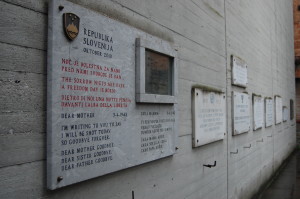
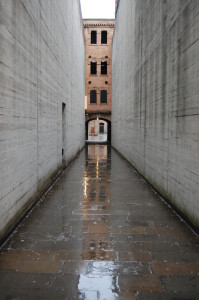
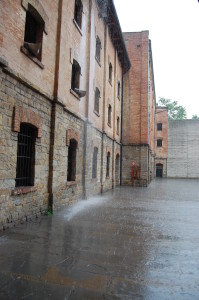

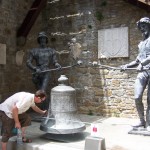

Upsetting though this is, thank you for bringing it to our attention,Jay. History has failed in teaching us to learn from the past.Particulary,as you mentioned,the massacres in Syria.
Why aren’t we all shouting from the rooftops! If anyone wants to protest, they can sign the following petition. It’s a start…
http://www.avaaz.org/en/us_and_india_stop_syrias_merchants_of_death/?tta
Thank you.
Thank you for this!I just discovered that this was where my dad was imprisoned, when taken captive during WWII while in battle in Italy. It was extremely difficult to watch & listen to the video but provides a great amount of insight into what he likely went thru. We were one of the lucky ones – he was freed & made it home, back to us in Canada. Again, thanks.
Hi Marion. The camp at Trieste was very moving for the both of us, somehow more so than the bigger camps in Germany and Poland we visited. As a general point, our travels made it very clear to us how lucky we are to be living in such a time of relative peace, harmony and prosperity. I’m glad the post we wrote meant something to you, and my Hearst thanks for dropping us a line about your father. Kind regards, Jason
Two years ago, I visited La Risiera, the site of my maternal grandmother’s demise. Unlike your visit, the day I toured was hot, humid and uncomfortable. My sense of dread, as I walked down that long, high, concrete lined entrance was palpable, and I felt my heart race. At 66 years of age (then), my eyes welled up as a cold, I’ve never felt in my life before enveloped my body.
Nonna was not Jewish, antifascist or a threat to anyone. She was just in the wrong place at the wrong time when she was rounded up with other unfortunates on that fateful day.
We don’t know whether she was exterminated there, or was taken away to be disposed of, only that she never came home that day, depriving my father of a mother and me of the ability to know her.
My father, long deceased, never spoke of this day, of his mother or of any events around this time, when he lived in Trieste as a teenager.
In 1956 he relocated to Melbourne, Australia, where in 1957 I was born. I still live here and from time to time I do get to go back to Trieste where all my relatives still live but I’ll never return to La Risiera or even go within eyesight of the location. Just the thought of those soul-less bastards and what they did with my grandmother, how much she must have suffered emotionally and physically renders me a mess.
The inhumanity of this, and every place like it should be taught to our children as a compulsory part of their education.
Thank you so much for your post, despite the pain that I feel again… and again.
Thanks for your message Carl. I can’t imagine walking in there as you did, that must have taken some strength. Take care and thanks again for writing, Jay